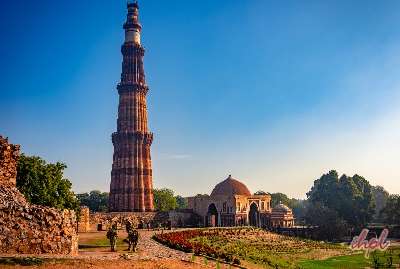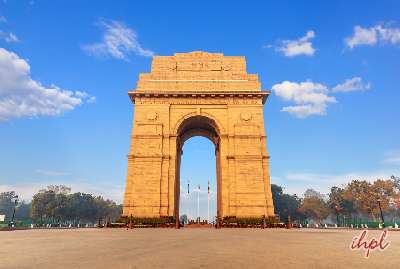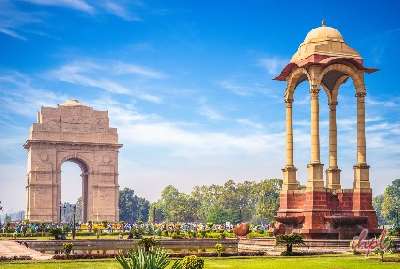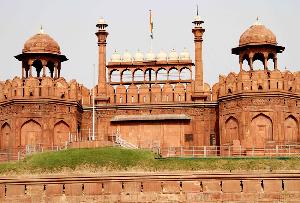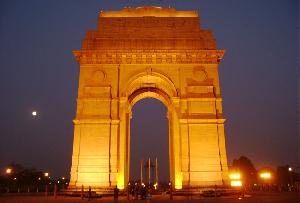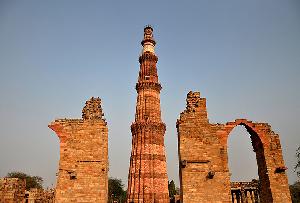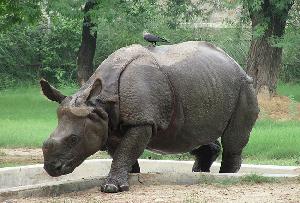Siri Fort in Delhi was built by Emperor Ala-ud-Din Khilji. Located north of Mehrauli and east of Hauz Khas, this fort city of Siri was laid in 1303. As you travel on Khel Gaon Marg, you will notice meandering walls built of rubble extending in the southern and western direction. These walls protect the Siri Fort.
The name of the city, Sir means head. History of Siri Fort in Delhi says that the heads of about 8000 Mongol soldiers were buried in the city. Siri Fort initially had palaces and numerous other structures including seven gates to the city. Incidentally, what remains of Siri Fort in Delhi, is some citadels, ramparts and the southeastern gate.
As you walk into the premises of Siri Fort in Delhi, you will get reminded of the luxurious palace that once adorned the fort with engravings of jewels and precious stones. After exploring the site bearing the ravishes of time and history, you may also visit nearby attractions in Delhi like Shahpur Jat village, Tohfewala Gumbad Masjid, Hauz Khas, Kalkaji Temple, Lotus Temple, Nizamuddin’s Shrine and Chirag Dehlvi’s Dargah.
History:
Built by Sultan Alaud-Din Khilji in about 1303, Siri is the second city of Delhi and was, to the north of Mehrauli. The few remains of the city can be seen in the Siri Fort in Delhi.
The legend of Siri Fort in Delhi
Siri Fort in Delhi had the Palace of Thousand Pillars, which is now in ruins. Only the embattlements have left of the entire fort.
The legend of Siri Fort in Delhi goes that Ala-ud-din got the heads of the infidels dug in the foundation of the fort. Siri derives its name from the Hindi word “sir”, meaning “head” because about 8000 heads of Mongol soldiers were buried in the walls of the city. Henceforth, Siri Fort in Delhi thus derived its name.
Siri Fort in Delhi has an interesting history, but there is no supporting evidence to believe this story.
Fast – Facts:
Location:
Siri Fort in Delhi is located near Asian Village complex,which lies on the east of Hauz Khas. You should go beyond Khel Gaon Marg towards the west
Built By: Sultan Alaud-Din Khilji
When was it was built: 1303
Special Feature:
The shopping centers and urban residential hubs around the rural site, which bears out the effect of ravishing time through its dilapidated structures.
How to Reach:
Tourists can either take local buses from various points within the city to reach Siri Fort is Delhi, or they can hire auto-rickshaws and taxis or even avail of the metro rail.
Nearest International Airport: Indira Gandhi International Airport
Nearest Metro Station: Central Secretariat
Nearest Railway Station: Nizamuddin Railway Station
Open: On all seven days of the week
Nearby Attractions:
As you visit Siri Fort in Delhi, you will be bewildered to see that how he ravages of time leaves irrecoverable damages on the growth of a culture. Only a few ramparts and bastions speak about the history of Siri Fort today. As you contemplate the undying spirit of the past era, you should also visit nearby attractions of Siri Fort.
Hauz Khas consists of a tank, Hauz-i-Alai and several monuments like mosque, madrasa and tomb. This tank was built by Emperor Ala-ud-din Khilji in 1300 so that rainwater preserved in the tank, could be distributed across the city of Siri.
Kalkaji Temple also popular as Kalkaji Mandir, is dedicated to Kalka Devi or Kali, a form of Goddess Shakti. This temple draws large number of devotees during the nine-day festival of Navratri
You must visit Lotus Temple or the Bahai House of Worship, which is internationally known for its architecture. The temple is laid amidst lakes and gardens. Hundres of visitors come here to relish its architectural splendor.
Located in Nizamuddin village, Nizamuddin’s Shrine is a memorial of the famous Muslim saint, Sheikh Hazrat Nizamuddin Aulia Chishti
Chirag Dehlvi’s Dargah was founded to idolize Nasiruddin Mohammed, who was popular as Roshan Chiraf Dehlvi.
You must visit shopping venues like Ansal Plaza on Khel Gaon Marg, Panchsheel Market, Nehru Place, Kalkaji Market, C R Park Market and Greater Kailash-1 Market




